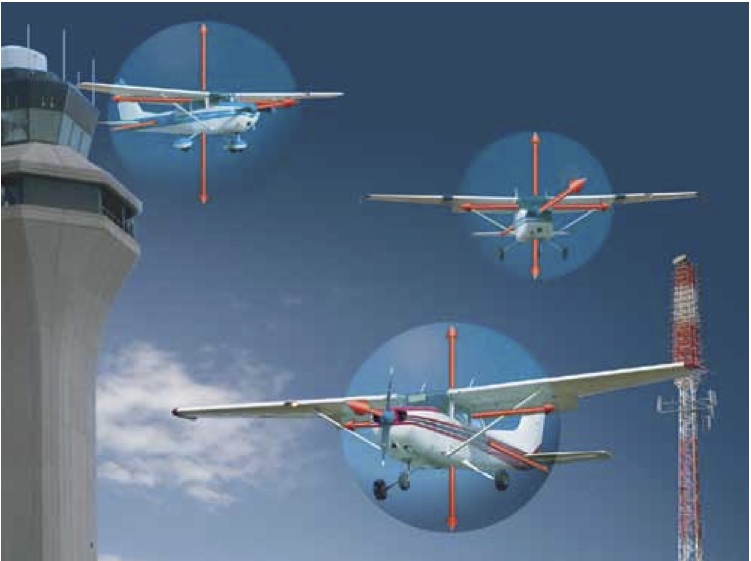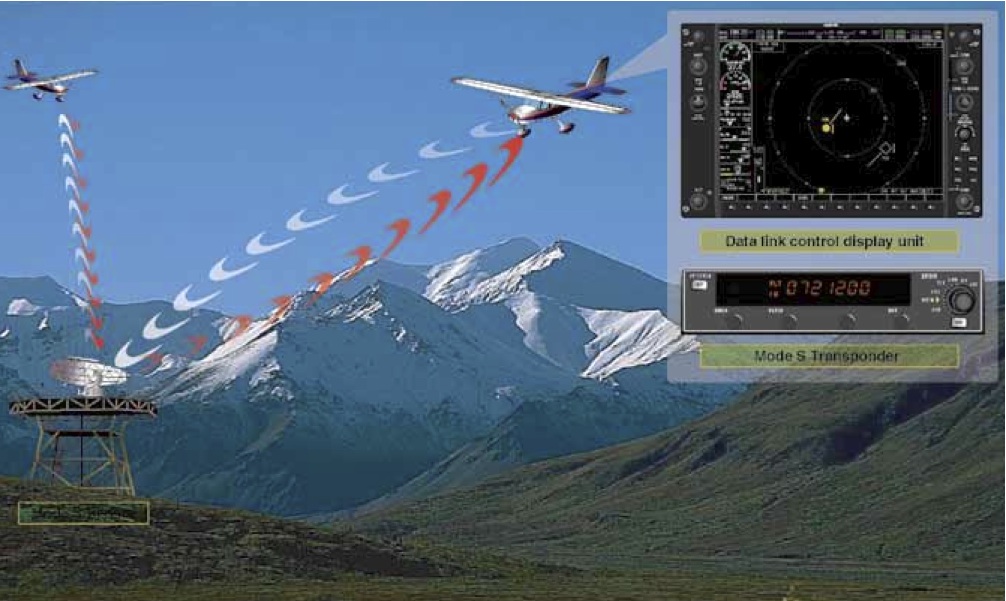There was a time not long ago when we began talking about this “new” technology that would not rely on ground based navigational facilities. It would let us fly anywhere and depict our position with amazing accuracy. This new technology was called Global Positioning System or GPS and is now used by everyone from parents driving their children to sporting events to children finding the closest game store using their smart phones.

When GPS was first conceptualized most did not realize the many ways it could be integrated into our everyday life. As we know the FM based Non Directional Beacon (NDB) is not always reliable and the least accurate type of approach to use. Those of us flying at small out of the way airports thought the NDB was a God send because we could get home even if it wasn’t VFR.
Due to inaccuracies of NDB’s I often found myself having to land at an alternate airport even thought the ceilings may have been 800 feet. With GPS and WAAS, Wide Area Augmentation System, I can now fly a precision approach down to 200 feet to airports in areas that five years ago I could not get into. Now I ask “What would I do without GPS?” when a few decades ago I never heard of GPS.
Similar to the development of GPS many of us don’t really understand ADS-B and how it can benefit us. I think you will find, as I did, that when ADS-B is fully operational we will find both safety and operational benefits.
What Is ADS-B
Mode C Traffic Advisory on Steroids.
Automatic Dependent Surveillance - Broadcast, ADS-B, service is being implemented in the national airspace system and as its name implies it relies on input from aircraft. Properly equipped aircraft will transmit their position, velocity, and altitude approximately every second. This data is then transmitted or broadcast to all aircraft.

ADS-B equipped aircraft will be able to read this data and display the position of other traffic. Similar to Mode-C equipped aircraft ADS-B is not dependent of ground based facilities. An ADS-B equipped aircraft near another ADS-B equipped aircraft can read this data directly from the other aircraft’s transmission.
This is like having a Mode-C traffic advisory software on steroids. Of course this information is only advisory in nature but it sure widens our traffic awareness. It has been proven in tests that we see traffic quicker if we know the direction and altitude of the traffic before we begin scanning the horizon.
Traffic Alert Collision Avoidance Systems, TCAS, are great tools for avoiding collision between two aircraft in flight. A large drawback of TCAS is the fact it is very expensive and is normally only installed in small jets and airliners. TCAS has limitations as to its range from the receiving aircraft.
TIS was the next best relatively affordable option for smaller aircraft in that it required the instillation of a Mode-S transponder and is now integrated into much of the new avionics packages. One shortcoming of TIS through Mode-S is that it is available in terminal areas and only those that have the capability. But eventually these will go away.
Through the Next Generations Air Traffic Control System, NextGen, ADS-B will be made available in a much wider area including almost the entire United States. Furthermore, with ADS-B you will be able to see aircraft many more miles away than any of the current traffic information systems.
With the ability to know an aircraft’s position many miles before it comes into our field of view, we can now begin looking in the direction of the other aircraft and begin planning accordingly many miles before a potential conflict. ADS-B will make looking for traffic much easier.
Free Weather All The Time
Another wonderful benefit of ADS-B is the weather broadcast over the Flight Information System, FIS-B. Free of charge the system currently transmits Aviation Routine Weather Reports (METARs), Special Aviation Reports (SPECI), Terminal Area Forecasts (TAF), and NEXRAD Radar Maps.
A New ACARS System or Text Messaging For The GA Pilot
Most air carriers and some other operators use a communications system that can send text messages between the aircraft and the company’s flight operations personel. The system is referred to as the Aircraft Communications Addressing and Reporting System. The ACARS system can be set up to automatically send and receive information such as time of takeoff and landing, weather information, and send aircraft system status information.
With the new Flight Information System Data Link, FISDL, commercial vendors can provide their customers with data such as customized weather and other tracking information such as the ACARS system used today. Since the communication system is provided by the government, many different vendors can supply data along the same network. This will give the user the option to retrieve their weather from various sources such as is available with many GPS devices today.
Limitations
The NextGen air traffic control systems will provide some valuable enhancements to safety and communications with the pilot in command but there are some limitations. First, and most importantly the current system of traffic avoidance is for informational purposes and will not provide for any avoidance maneuvers but it sure is nice to know who is out there.
Weather and other textual information can be provided through the Flight Information System (FIS-B) implemented by the FAA within ADS-B but there is a line of site limitations. There are two methods of data transmission Universal Access Transceiver, (UAT) and 1090 ES.
The Universal Access Transceiver (UAT) is part of the ADS-B network and operates on 978 MHz which is a line of site frequency. Stations are being installed throughout the United States to transmit FIS-B information but complete coverage will be a few years coming. The UAT is intended for aircraft operating below twenty four thousand feet.
For aircraft operating above eighteen thousand feet a 1090 MHz extended squitters are being installed. Again these are line of site devices. For the pilot operating the aircraft the system essentially operates similarly and will not require action by the pilot to use either system.
Conclusion
ADS-B when it has been fully implemented is definitely for me. Two of my favorite features while flying general aviation will include the ability to receive weather and traffic information that is not only radar dependent. Both of these will increase situation awareness and safety. After the demonstration given by the FAA on NextGen and ADS-B I am optimistic this will be large leap forward in the enhancement of safety.
After researching ADS-B and having the FAA sell me on the system I find myself asking two questions. Why didn’t we do this sooner and how much is it going to cost me to install it in my aircraft?
With a 2013 schedule nationwide coverage of the Flight information service and the anticipated decrease in the cost of the equipment in my aircraft, I am now looking strongly at replacing XM weather with the new flight information system. I hope to have a better understanding in a future article as to the cost and capabilites of FIS-B in comparison to XM weather.
As someone who enjoys all things technical I was excited to see ADS-B advertised for use on the Ipad. Now that gets me excited about the future of ADS-B and its various implementations in our cockpit.
Safe Flying!
For More Information:
FAA ADS-B Website
Visit Our Sponsors:
